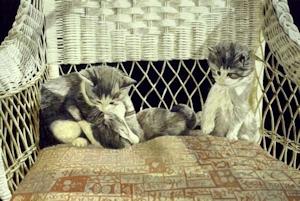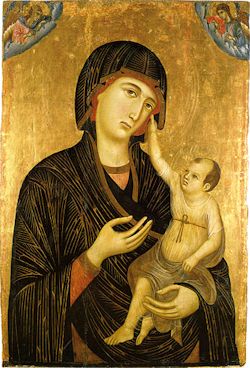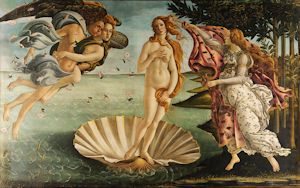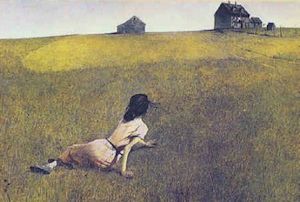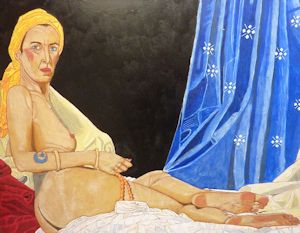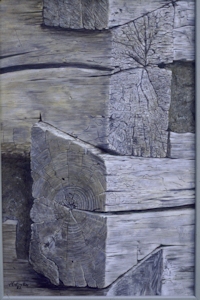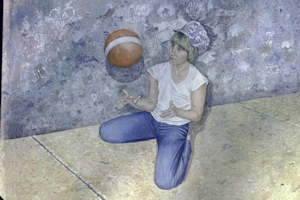|
John's Blog
Sunday, March 13 2016
The painting above called, "Grandma's Kittens" is one I did several years ago of three kittens sitting in what was my grandmother's favorite rocking chair. It was 20 x 30 inches and done in egg tempera. The painting method of today's discussion. Egg Tempera is a painting medium used throughout art history. It was the primary painting method used from the first century CE to about 1500 when oil painting took center stage. This is a painting medium consisting of colored pigments mixed with a glutinous material such as egg yolk. This isn’t to be confused with the paint called “Tempera Paint” used in school more commonly called “Poster Paint” which is made with different glues and sizes. Egg Tempera, most often called just “Tempera.” is most often painted on hard surfaces such as wood panels or in modern times in such things as untempered Masonite. The origins of tempera painting can be found as far back as on Egyptian sarcophagi. It took over as the medium of choice from “encaustic” painting, (using heated beeswax, more on that some other time) throughout the Byzantine world and Medieval and Early renaissance Europe. Tempera paintings are created by mixing the colored dry pigments with water and then adding small amounts of egg yolk to the mixture. This paint is applied to an absorbent surface. This surface is most often created by coating the panel with a form of “gesso.” This gesso is made by combining chalk or gypsum with a glue, most traditionally a rabbit skin glue to make a brush able thick paint with which to coat the panel. The tempera paint is applied with brushes. The amount of egg yolk used can control the transparency as well as the drying time of the mixture. With the use of just water with the egg it dries very fast. At times something like vinegar or even wine is added to the egg yolk to slow down the drying time. The paint is applied in thin glazes or with small brush strokes since it will dry quickly. Unlike oil paints it cannot be applied in thick passages or with thick oil layers so the colors do not have a deep color saturation and do have a matte finish. The final work is water resistant but not waterproof. Some of the famous painters and paintings done in tempera are: All surviving panel paintings by Michelangelo are in egg tempera. (late 1400’s to early 1500’s)
I have painted may egg tempera paintings. Some are shown here. Mine were done in untempered Masonite with I prepared with the traditional method of home made gesso. I used dry pigments mixed with just enough water to make them a soft paste, and then added small amounts of egg yolk to each painting mixture as I painted with it. I used both glazing techniques as well as small brushes to do a cross hatching to build up depth and paint colors.
|
Site Mailing List
Sign Guest Book
View Guest Book
The portraits, paintings, prints and art classes of John Entrekin
John Earl Entrekin
Site designed and managed by Midair-maintence. All content is copyrighted by John Earl Entrekin, 2011
Build your own website
WebStudio Website Builder
WebStudio Website Builder






